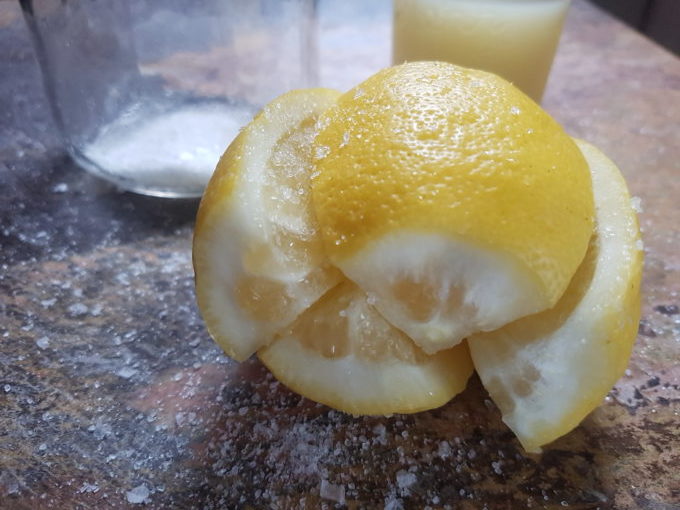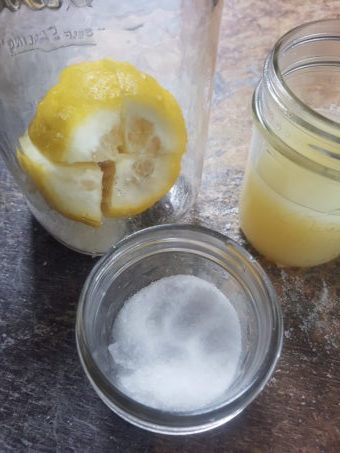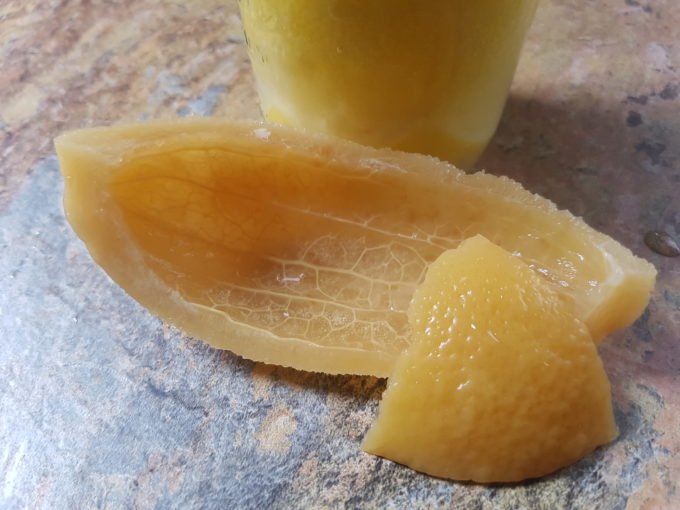 Requiring only 2 ingredients, salt and lemons, it is incredibly easy to have this versatile condiment and meal enhancer in your fridge. Okay, so it sometimes also needs a little lemon juice, but you don’t even need a pressure cooker or canner. Just make sure your jar and it’s lid have been sterilized, either with boiling water or steam, and you are good to go!
Requiring only 2 ingredients, salt and lemons, it is incredibly easy to have this versatile condiment and meal enhancer in your fridge. Okay, so it sometimes also needs a little lemon juice, but you don’t even need a pressure cooker or canner. Just make sure your jar and it’s lid have been sterilized, either with boiling water or steam, and you are good to go!
Humans have been using salt to preserve things since the beginning of time… or at least for as long as we have known about salt, and that might as well have been the beginning of time. Besides fire, what has been more pivotal in the basic development of human technologies? The importance of salt can even be traced back to the establishment of the very first city in Europe, Solnitsata, which literally means ‘salt works’ and had a working salt mine as early as 5400 BC!
Now, I don’t know if preserving lemons has gone back that far, but we do know a little bit about the history of lemons themselves. The basic lemons that we know today are actually a genetic hybrid between bitter orange and citron, and they probably originated from areas in modern day India, Burma, and China. The name lemon can be traced through Old French and Italian back to the Arabic and Persian names laymūn and līmūn, but these both refer simply to a citrus fruit. Because citrus plants self-pollinate and can interbreed with any other kind of citrus it’s really hard to say which came first and which is the truest, but you can certainly trace their general cultivation immediately into ancient middle eastern lands through every major leader and empire, and they had definitely made an established name in Europe by the second century AD. We can then, thank the good ole’ Columbian Exchange for bringing them to the Americas right-off-the-bat in 1493.
 As for this recipe…
As for this recipe…
- What lemons should you use? Any, but it might be a good time to opt for organic as you will be consuming the rind and everything that has been put on it. Some people really prefer meyer lemons for general use because of their sweeter flavor, but they are known for having thinner skins, and as mentioned, the rind is the key consumable in preserved lemons.
- As for salt, I will always suggest sea salt in general, however you may choose to go with pickling salt for a clearer brine.
- And speaking of the brine; sometimes you get ‘clouds.’ That is perfectly fine and totally normal. Preserved lemons are generally rinsed before they are used so it won’t ever be an issue in your finished dish.
- And along with that, they say that only the rind gets used…. I say, “Screw that.” I always use-up the flesh, too. Why not?! It tastes great and is totally consumable. Why waste it?
- Although this recipe doesn’t call for it, you can use all manner of herbs and spices to flavor your preserved lemons. Fresh rosemary, thyme, allspice, or chilies are common.
- Last word of advise: use a clean utensil to retrieved your preserves, versus your fingers. This will prevent contamination with bacteria, and they will last much longer.
What do you do with preserved lemons? Everything!
You can chop them, slice them, dice them, mince them, pulverize or blend them as an additive to any dish, as desired. They can be used within a sauce or dip, or added at the last minute to finish a dish.
- Lemon is always great with seafood or steamed greens.
- Preserved lemons blend well with horseradish for dips.
- It’s great worked into a yogurt based spread like labneh.
- Use them to make aioli.
- They are perfect for throwing into salads or salad dressing.
- I like to add them to my olive tapenade.
- I’ve also used them in chicken marsala.
- Though not in the original recipes, I’ve worked preserved lemons into sauce gribiche to go with steamed artichokes, and also tartar sauce and gremolata.
- You can use them to flavor a white sauce for pasta.
- Presereved lemons are a particularly key player in Morocco, where they call them ‘leems‘. Try a tagine or use them to make chermoula.
- In Cambodia they use them in Ngam nguv.
- Lemon and lamb blends well, as does lemon and mint.
- Don’t forget about an Indian style chutney with parsley and cilantro.
Seriously, the possibilities are endless.

Preserved Lemons
By: Semiserious Chefs
Makes: 1 pint; 4-5 preserved lemons
Ingredients:
- 4-5 lemons
- sea salt (~1/4 cup)
- lemon juice – if needed
Directions:
- Sterilize a pint jar and it’s lid with either boiling water or steam.
- Slice a little sliver off the stem end of each lemon. The traditional way to slice preserved lemons is to leave each as ‘one piece’ and only quarter them down to the last 1/2 inch. (You can see this in the picture up top.) If you want to to sever them completely it really doesn’t hurt anything, and may even make packing your jar easier and more efficient.
- Salt the sliced faces of each lemon and add 1 Tablespoon of salt to the bottom of your jar.
- Pack the lemons into the jar, giving them each a good firm squeeze or a nice squash, to release the juice. Pack them relatively tight and you probably won’t need to add any additional lemon juice, but add what you need to fill the jar nearly to the top and place on the lid.
- Let this set on your counter for 3 days, giving it a good shake at least once daily. (This is my favorite part!!!) Then move the jar to a dark cool cupboard for 3 weeks. You can continue to ‘toss’ it once in a while as desired. Don’t worry if you get some cloudiness in the brine.
- Your lemons are ready when the peels are soft and separate easily from the meat. If you always use a clean utensil to retrieve pieces it will prevent bacterial introduction. With this practice you may be able to keep your lemons in dry storage, but I always suggest the fridge.
- Traditionally only the rinds are used in a dish, but the fruit is entirely edible and I’d suggest using it, as to not be wasteful.


Post a comment